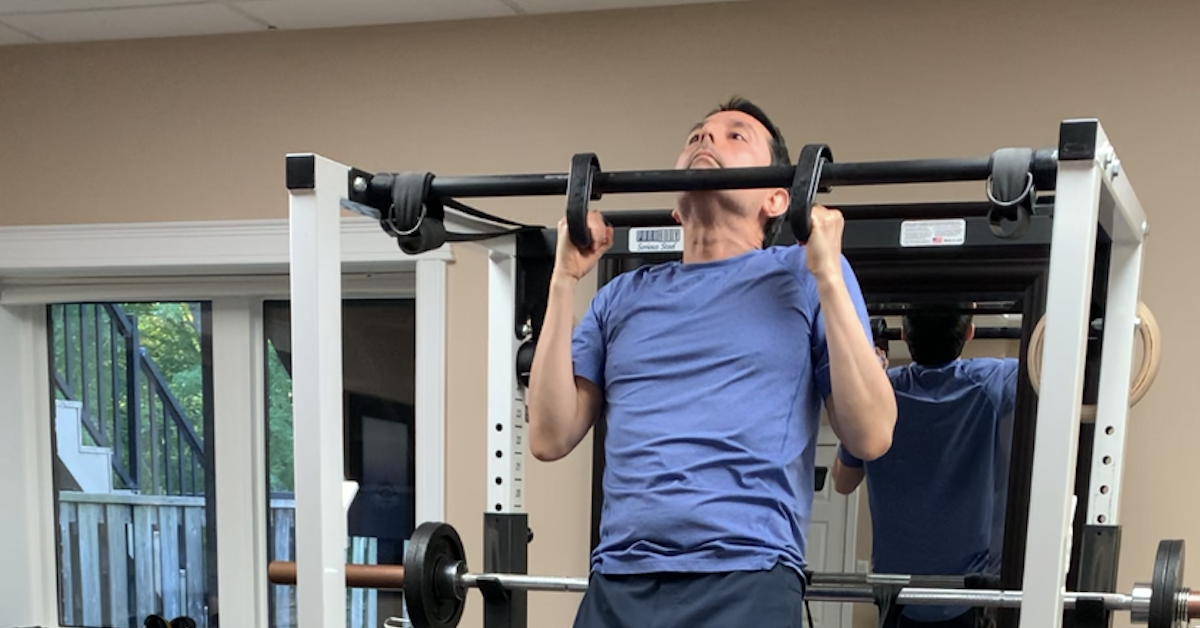Testing your strength levels each year isn’t just about structural balance—it’s also essential for determining the optimal training frequency for your lifts.
The Recovery Test Method
Select one major lift per month to test, such as:
✔ Squat
✔ Deadlift
✔ Bench Press
✔ Pull-Up
✔ Parallel-Bar Dip
Each month, follow this structure:
- Week 1: Low reps (maximum strength phase)
- Week 2: Moderate reps (hypertrophy phase)
- Week 3: High reps (muscular endurance phase)
- Week 4: Rest (no testing)
The next month, repeat the process with a different lift.
Low-Rep Recovery Test (Strength Focus)
- Perform a few warm-up sets, then one all-out set using your 5-rep max (5RM) load.
- The next day, perform as many reps as possible with that same 5RM load and record your reps.
- Repeat this daily for up to 7 days.
- The session that produces the greatest number of reps reveals the ideal recovery period for that lift in a maximum strength phase.
Moderate-Rep Recovery Test (Hypertrophy Focus)
- Repeat the same process using a 10-rep max (10RM) load.
- This determines the optimal recovery period for training in a hypertrophy phase.
High-Rep Recovery Test (Endurance Focus)
- Repeat the process one more time, now using a 20-rep max (20RM) load.
- If testing pull-ups or dips, use an assisted chin/dip machine if needed.
- This identifies the ideal recovery period for a muscular endurance phase.
What This Tells You
While not a perfect system, this approach provides a clear pattern of how many recovery days you need based on training intensity. Once you’ve completed this self-assessment, you can tailor your training cycles for better progress and injury prevention.
What’s Next?
Now that you know how to test recovery needs, you can fine-tune your training frequency to match your goals.
For more in-depth strategies, case studies, and expert insights, check out my Strength Training Parameters and Program Design webinar.

Strength Training Parameters and Program Design
Strength training success depends on more than just lifting weights—it’s about knowing the right parameters and program design strategies to match each client’s needs. In this 118-minute webinar, John Paul Catanzaro blends research with practical experience to show you how to design highly effective programs for beginners, intermediates, and advanced trainees. Includes an 82-slide PDF report, training log, and reference list for immediate application.

From Zero to Two: Leo’s Chin-Up Breakthrough
When Leo began training with me in September 2024, our first goal was to improve body composition — lose fat,

Resistance Training Foundations: How to Progress Safely and Build Real Strength
Resistance training isn’t just for bodybuilders. Whether you’re just starting out, returning after a break, or training for performance, knowing

Neck Extensions Before Arm Curls: Unlock More Strength
When most people warm up for arm curls, they’ll hit a few light sets or maybe stretch out a bit.
follow
Error: No feed with the ID 2 found.
Please go to the Instagram Feed settings page to create a feed.
